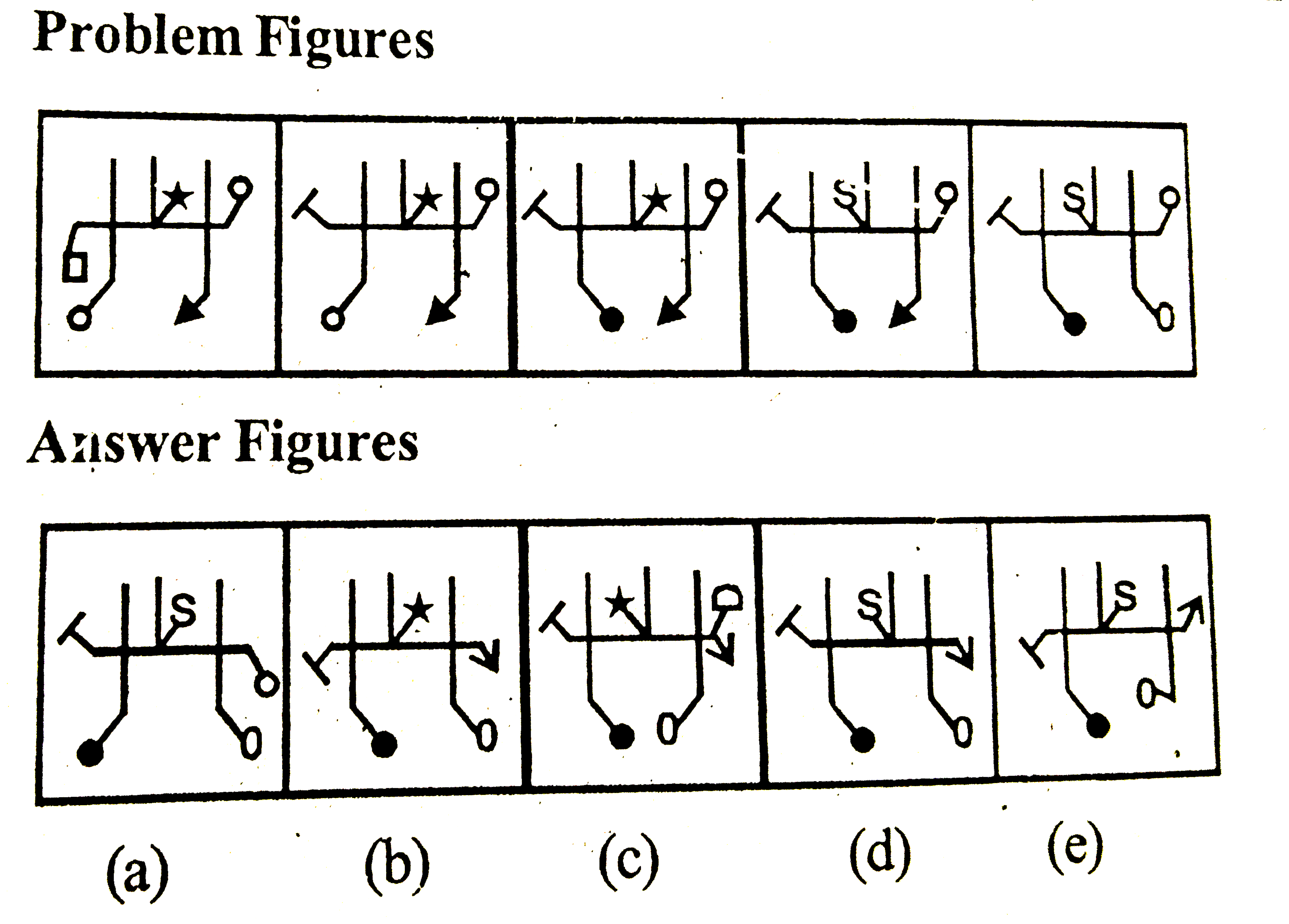Twelve people are sitting in two parallel rows containing six people each such that they are equidistant from each other. In row 1: P,Q,R, S, T and V are seated and all of them are facing South. In row 2: A, B, C, D, E and F are seated and all of them are facing North. Therefore, in the given seating arrangement, each member seated in a row faces another member of the other row. S sits third to the right of Q. Either S or Q sits at an extreme end of the line. The one who faces Q Sits second to the right of E. Two people sit between B and F. Neither B nor F sits at an extreme end of the line. The immediate neighbour of B faces the person who sits third to the left of P. R and T are immediate neighbours. C sits second to the left of A. T does not face the immediate neighbour of D. Which of the following is true regarding T ?
F faces T
V is an immediate neighbour of T
F faces the one who is second to the right of T
T sits at one of the extreme ends of the line
The correct Answer is:C
Topper's Solved these Questions
Similar Questions
Correct figure in the following

View SolutionWhat should next in the following letter series based on English alphabet ?
CEA IKG OQM ?
View Solutiond-ब्लॉक तत्व किन तत्वों को कहते हैं? ये आवर्त सारणी में किस वर्ग में स्थित हैं? इनके प्रमुख लक्षण बताइए।
View Solutionनिम्न का कारण स्पष्ट कीजिए - (क) जलोद्भिद में वायु अवकाश अत्यधिक विकसित होते है ,(ख) मध्योद्भिद पौधों को नमक के जल में रखने पर वे मर जाते है |
View Solutionतीन प्रतिरोध तार हैं। प्रत्येक का प्रतिरोध 4 ओम हैं। इनमें सम्भावित संयोजनों को प्रदर्शित कीजिए। तथा प्रत्येक संयोजन में तुल्य प्रतिरोध ज्ञात कीजिए।
View Solution1 मीटर की दूरी पर स्थित दो समान्तर तारों में क्रमशः 1 ऐम्पियर तथा 3 ऐम्पियर की धाराएँ एक-दूसरे के विपरीत दिशाओं में प्रवाहित हो रही है। दोनों के प्रति मीटर लम्बाई पर आरोपित बल है-
View Solutionदो लम्बे समान्तर तार परस्पर 3.0 सेमी की दूरी पर है। इनमें क्रमशः 2.0 ऐम्पियर तथा 3.0 ऐम्पियर की धारा प्रवाहित हो रही है। प्रत्येक तार द्वारा दूसरे तार की प्रति मीटर लम्बाई पर लगने वाले बल की गणना कीजिए।
View Solutionदो लम्बे सीधे तार, जिनमें प्रत्येक में 5.0 ऐम्पियर धारा प्रवाहित हो रही है, एक-दूसरे के समान्तर 2.5 सेमी की दूरी पर रखे है। तारों की 10.0 सेमी लम्बाई पर लगने वाला बल ज्ञात कीजिए।
View Solutionएक राजमार्ग पर दो बिन्दु A और B एक दूसरे से 90 किमी की दूरी पर है। एक कार A से तथा दूसरी कार B से एक साथ चलती हैं। यदि वे एक दिशा में चलती हैं, तो वे 9 घण्टे बाद मिलती हैं और वे विपरीत दिशा में चलती हैं, तो 97 घण्टे बाद मिलती है। उनकी चाल ज्ञात कीजिए।
View Solutionएक कक्षा के छात्रों को पंक्ति में खड़ा किया जाता है। यदि प्रत्येक पंक्ति में 4 अतिरिक्त छात्र होते तो 2 पंक्ति कम प्रत्येक पंक्ति में 4 छात्र कम होते तो 4 पंव्ति ज्यादा होती है। कक्षा में छात्रों की संख्या ज्ञात कीजिए।
View Solutionएक के विद्यार्थियों क्रो पंकितियों में खड़ा होना है। यदि पक्ति में 3 विधर्थी अधिक होते, तो 1 पक्ति कम होती । यदि पक्ति में 3 विधार्थी कम होने , तो 2 पंक्तिया अधिक बतनी ।कक्षा में विद्यार्थियों की संख्या ज्ञात कीजिए।
View Solutionयदि 10 टिकटों पर 1 से 10 तक की (प्रत्येक पर एक) संख्यायें लिखी हुई हैं। कोई संख्या दोहराई नहीं गई है। यदि A एक ऐसी घटना है, जिसमें विषम संख्यायें हों और B एक ऐसी घटना हो, जिसमें 3 से विभाज्य संख्या हों, तो दिखाओ कि P(A∪B)=P(A)+P(B)−P(A∪B)
View SolutionA तथा B धातु युक्त द्विअंगी मिश्रधातु के इकाई सेल की ccp संरचना है जिसमे A परमाणु कोनो पर तथा B परमाणु घन के प्रत्येक फलक के केंद्र पर स्थित होते है । यदि इस मिश्रधातु के क्रिस्टलीकृत के दौरान, इकाई सेल में दो A परमाणु लुप्त हो जाते हैं, तब प्रति इकाई सेल का पूर्ण संघटन होगा :
View Solutionपांच तत्व A, B, C, D व E के E∘ क्रमशः −1.36,+0.32,+1.36,−0.42 तथा −2.2.6 है उनको बढ़ती सक्रियता के क्रम में लिखो ।
View Solutionसमान चालकता सेल में लिए गए दो विलयनों A तथा B के प्रतिरोध क्रमशः 50 ओम तथा 100 ओम है । यदि A व B के सामान आयतन मिला दिए जाये तो सामान चालकता सेल में मिश्रण का प्रतिरोध क्या होगा ?
(मोल A व B को मिलाने पर वियोजन की मात्रा में कोई परिवर्तन नहीं होता है)
View Solutionयदि A और B दो घटनाएँ इस तरह से हों कि P(A)=13,P(B)=14,P(A∩B)=15 तो P(A/B)=
View Solution

